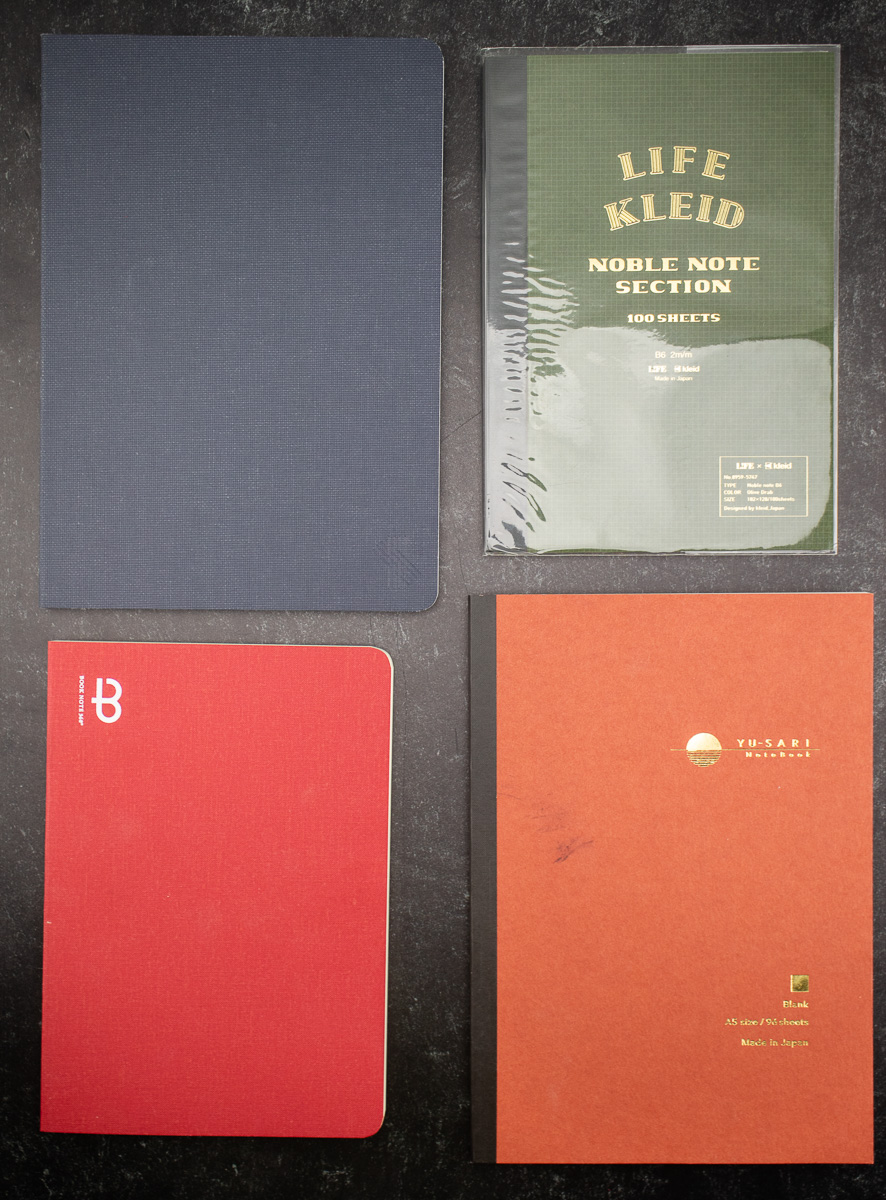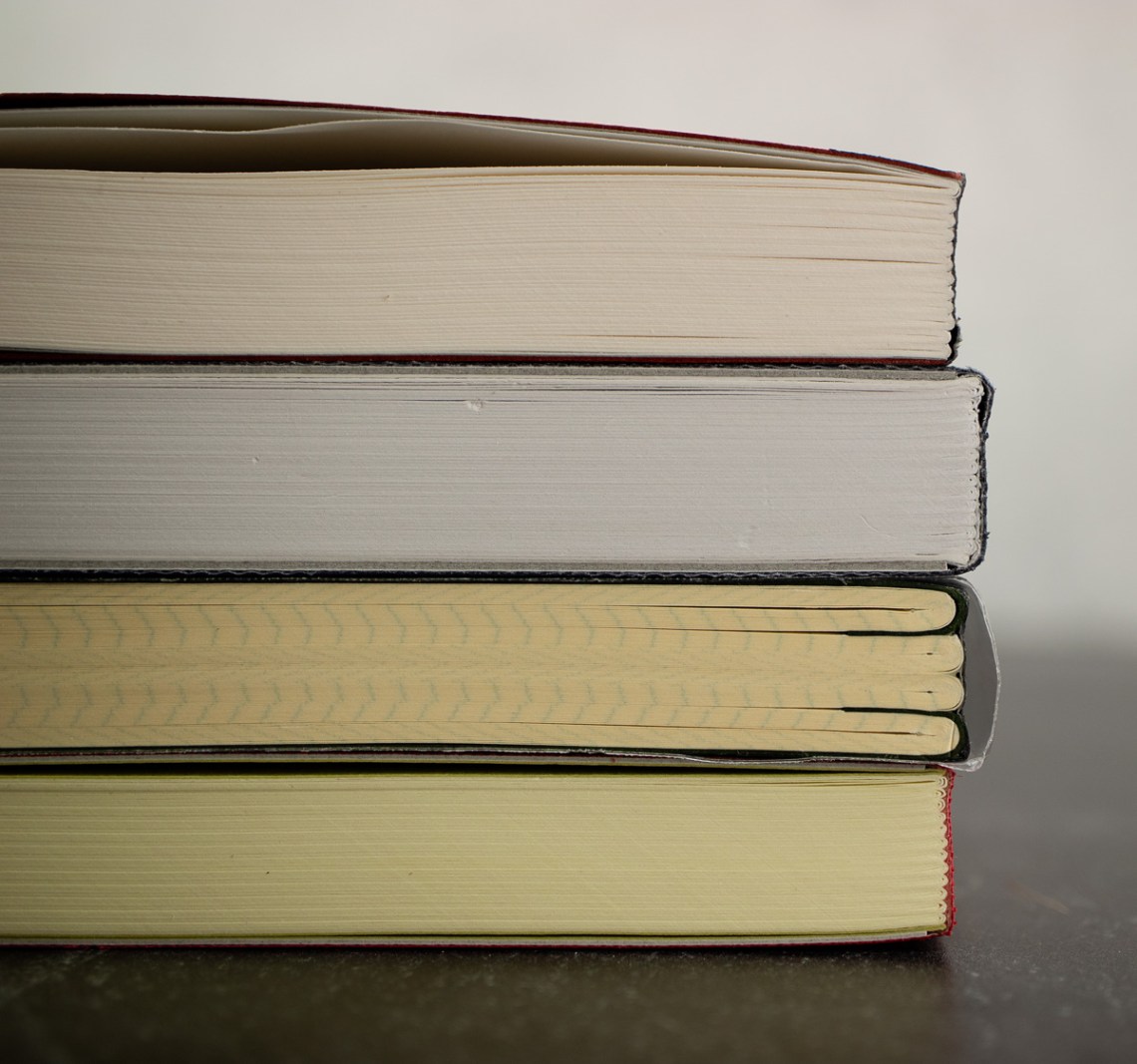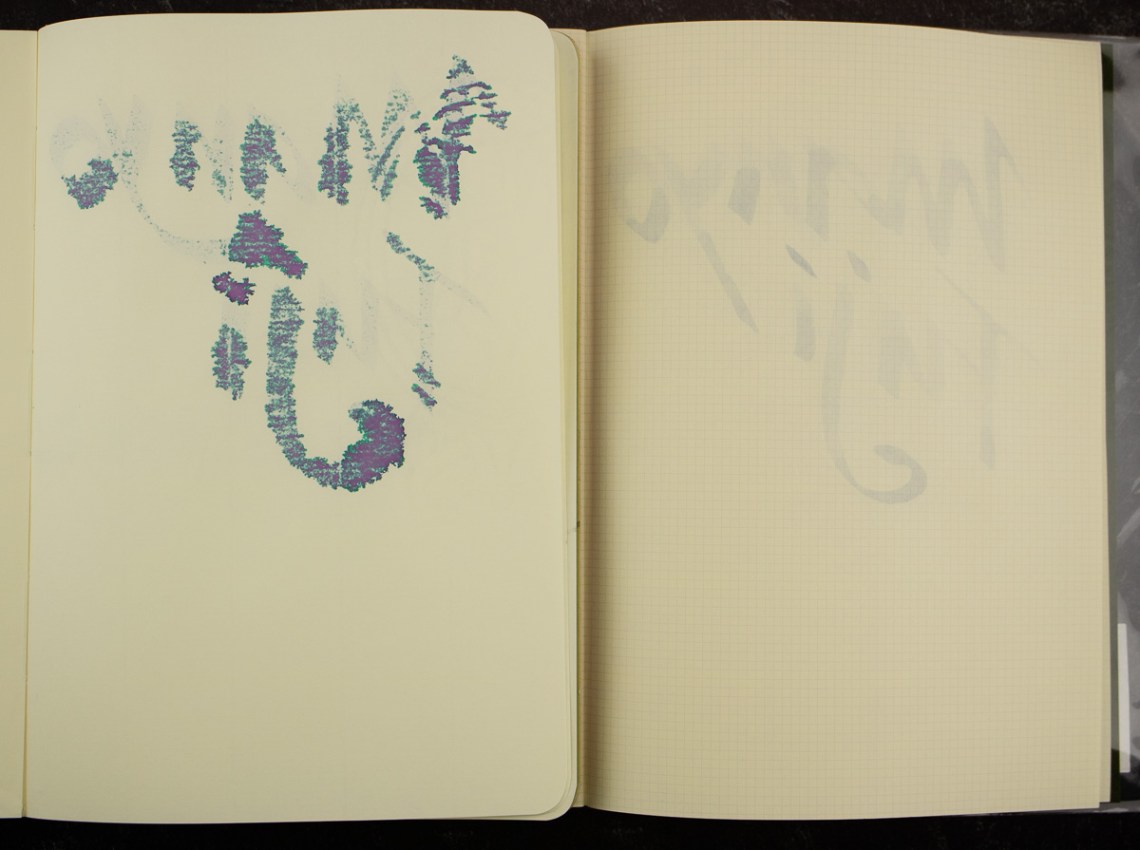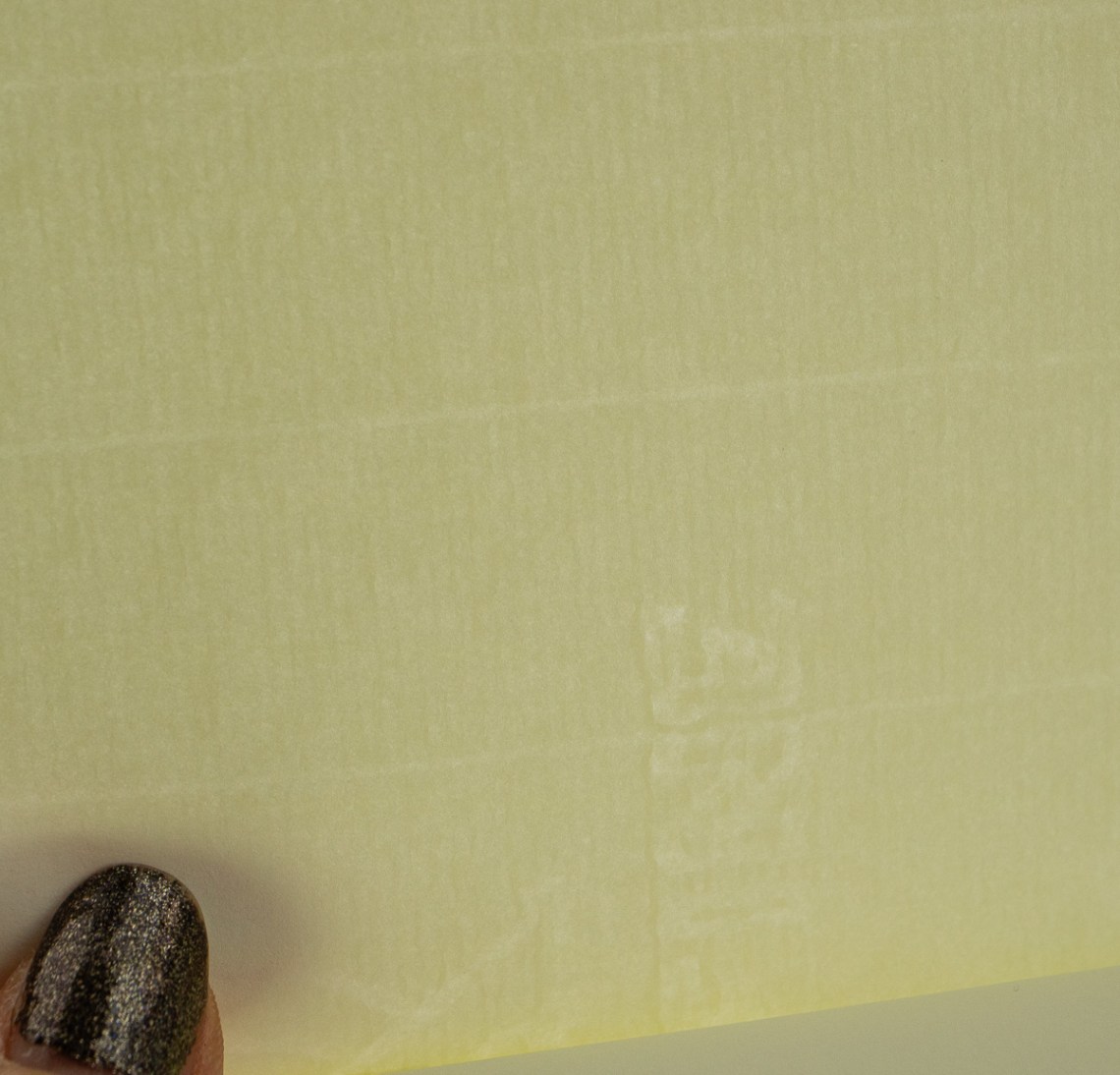This was not the review I thought I’d be writing today. I purchased an array of notebooks over the past few weeks — at the San Francisco Pen Show and via Yoseka Stationery — and I was quite excited about them. All four of the notebooks I purchased (or were given for review) were well-made and came from Asia, known for their attention to detail and high quality paper stock. I really thought they were all going to be stellar performers but when I started testing them, the majority fell flat for me. I did PUSH the usability of these notebooks beyond regular daily use so keep that in mind as you proceed with this review.

The four notebooks in this review are:
- Life Kleid Noble Note Section (B6, 2mm grid, 100 sheets, made in Japan, $16)
- Book Note 360º (B6, blank, 190 sheets, made in Japan, $29)
- Nakabayashi Yu-Sari (A5, 96 sheets, made in Japan, $14.40)
- Musubi Rasa 83 (A5, 7mm lined, 83 gsm, 105 sheets, made in Singapore, approx. $23 USD)

Like I said in my intro, I think my expectation may have been high for these notebooks, maybe unreasonably so. With the price points varying from just under $15 to almost $30, one might think that my preferences would fall along price lines — the more expensive, the better the performance but that was not the case.
When looking at the overall construction and binding of the books, all featured stitched Smyth-style binding with multiple signatures of paper stitched together and then taped with bookbinders tape or wrapped with board-supported book cloth covers. The Book Note 360º and Musubi both are completely wrapped in book cloth with board underneath to create a sturdy, flexible cover. The Yu-Sari and Life Kleid books both have book tape spines and cardstock covers but the Life Kleid has a plastic overwrap that can be left on the notebook to protect it or removed.

Both the Book Note 360º and Musubi have rounded corners while the Yu-Sari and Life Kleid have squared corners. I don’t know if these aesthetic decisions will be make or break for you, they certainly weren’t for me but its intersting to see the similarities and differences.
The Book Note 360º and Musubi Rasa 83 are the most similar in all aesthetic details but the Musubi is actually less expensive (minus shipping costs) than the Book Note 360º and its a smaller notebook. Even the paper texture on both books is more similar to each other than the Life Kleid and Yu-Sari — the paper in both books has a slight powdery texture to the hand. Under a pen, it is ever-so-slightly toothy creating a bit of friction, slowing down the writing process.
The Life Kleid and Yu-Sari are also more similar to each other with square corners and black-tapped spines. Even the paper is more similar being very smooth — more like Rhodia paper with an almost slick surface that will keep pens skating along the surface.
The only aspect where the similarities change is in paper color. The Book Note 360º and Life Kleid both feature a creamy, ivory paper color while the Musubi and Yu-Sari both feature more of a natural white paper color. The Musubi paper is the brightest white of all four books.

Now is the point in the review where the proverbial wheels come off the wagon. The writing tests. Which, in all honesty, is the most important part of any notebook.
My first ding is the Book Note 360º which performed fine overall except that there was a good deal of show through to the back side of the page. For the price, only getting to use one side of the paper effectively is not ideal.
From the front side, the paper looks just fine and will be a good writing paper. It does not handle copious amounts of ink well so don’t reserve this notebook for ink testing or swatching purposes.


The paper used in the book is OK Fools which I’ve tested in the Yamamoto Paper Sampler in the past but it always feels different when I start using paper in a notebook that just testing a couple full-sized sheets. There is also very visible laid lies and watermarks. This may be a bug or a feature depending on your personal preference. I am okay with it but is definitely something to be aware of.

Notebook grievance #2 is the Life Kleid Noble Note Section notebook. I was all keen to have a full notebook of the teeny tiny 2mm grid lines. What I didn’t realize is that the printing technique used to get the grid on the paper, resists most ink. This is a huge “nope!” for me. Overall, the Life Kleid was more tolerant of fountain pen ink than markers or brush pens but what a strange reaction!

On the plus side, there was no show through or bleed through on the Life Kleid paper, even when copious amounts of ink were thrown down so it did redeem itself a bit when used with a folded nib pen for ink experimentations.

This is the notebook grievance that is hardest to talk about. The Musubi Rasa 83 did not meet my expectations. Even after reading the lengthy explanation on the Musubi site about he paper choices and the trade-offs that had to be made in order to find a paper that would dry relatively quickly while keeping many of the properties required by fountain pen users. However, there was a mention in the description that the original paper has been modified to improve dry times and resist hand oils but in doing so, I found that the line weights of my pens was significantly altered. My Japanese fine and extra fine nibs performed more like medium nibs, and so on. I buy extra fine and needle point nibs because I like an extremely fine line and a paper which increases my line width willy-nilly is not acceptable.


I don’t normally use lined paper but the 7mm line width on the Musubi Rasa 83 is good with a pale, extra fine line printed on the sheets. But the issue with lined or grid papers, like the Life Kleid is the printed lines or grids can have unexpected results depending on the type of ink chosen to write on the paper. When I attempted to use a folded nib on the lined Rasa 83 paper, weird things happened.


So, those were the three disappointments for me: the Musubi Rasa 83, the Book Note 360º and the Life Kleid. They all have things that recommend themselves depending on how you use your notebooks. I use my notebooks for everything and I ask a lot of the paper contained within them. Some of the issues I ran into specifically had to do with the pre-printed lines so I recommend that if ink resistance is something you don’t like, I recommend purchasing blank notebooks and using guidesheets behind your page to help keep you straight.
I plan on purchasing a Life Noble Note in blank because the paper is really good, with no bleed through or show through. It was really the grid lines that made the Life Kleid a no-go for me. I will also pick up a blank Rasa 83 from Musubi in blank as well since I am hoping that without the lines, the paper might perform better. Though the widening of the line widths might still be an issue so I’m on the fence about investing in any more of this specific paper from Musubi.
The one notebook that was the pleasant surprise was the Nakabayashi Yu-Sari notebook. It was the least expensive of the four and performed the best across a variety of writing tools and techniques from extra fine nibs to folded nibs that I use for ink testing. This is the second time that a Nakabayashi notebook surprised me. The first time as the Nakabayashi Logical Prime Notebooks. They are such unassuming notebooks with simple paper covers and a small gold foil logo on the cover. I just didn’t expect the Yu-Sari to be the runaway winner in this batch of notebooks. I expected it to be a solid option but not necessarily the notebook I would most likely recommend to others. I tested the blank version of the notebook so it had the unfair advantage of not having any pre-printed lines or grids that might resist my fountain pen ink or markers. The Logical Prime notebooks I tested earlier were pre-printed with grid lines and I did not notice any ink resistance like I saw with the Life Kleid and Musubi Rasa 83 so I feel fairly confident in moving the Nakabayashi notebooks into my Top 5 list at this point.
Have you tried any of these notebooks? If so, what are your favorite features or not? I’d love to hear how these notebooks perform for you.
DISCLAIMER: Some of the items included in this review were provided free of charge by Musubi for the purpose of review. Please see the About page for more details.


I love the Life Kleid because of how it looks, but I agree the resisting grid lines are not ok!
Yep, you’ll see some line widening on the Rasa, which is down to the nature of the papermaking style rather than any customisations we’ve done to it — all modern Japanese microcoat, including Cosmo Air Light, and all the b7 variants and so on, will exhibit this widening to at least some degree with any handwritten text. Has to do with the way the sizing spreads the ink across the page, and is the tradeoff for why microcoat also displays things like shading and sheening so well; what enables the latter also causes the former.
This is just one of those things that’s inherent to the entire family of papers made in this style, and it’s really going to boil down to personal preference and the kinds of nibs/inks you like to use on a daily basis. One of the big things we’re going for here is to try and make available a bunch of our folio notebooks in all these different families of paper, so that everyone will be able to affordably find something that works for their particular set of tools and writing style. Right now we’ve got ultrathin techo (TR/S), traditional (Bank Paper), modern microcoat (CAL/Rasa), and cottonised (Spica Bond), and the aim is to add more choices.
I meant to get some Rasa while in SF, but I got distracted and he sold out.
I totally agree about Nakabayashi notebooks! I love the Logical and I just started using a Yu-sari that I got for review from Galen Leather. It is so good that I just ordered another.